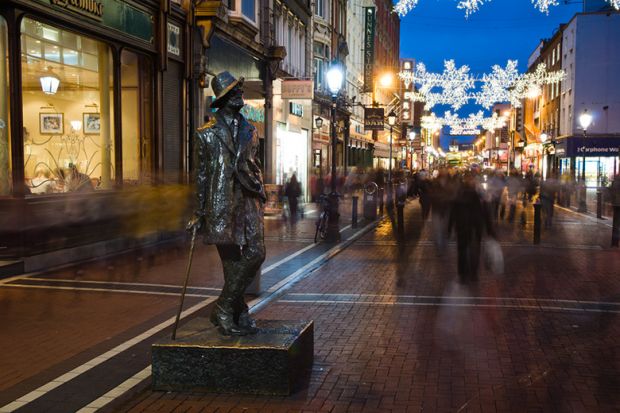Histories of modernism are increasingly paying attention to the economic conditions in which avant-garde art operated, and particularly the material conditions of publication and reception. Little magazines have been the primary focus of attention in these new histories: Andrew Thacker and Peter Brooker’s Oxford Critical and Cultural History of Modernist Magazines has done great work in tracing the original publication of famous books in serial form, and the Modernist Journals Project at Brown University and the University of Tulsa has prompted studies of modernist little magazines.
We know now that these magazines are as important as the first editions when looking at the early reception of interesting modernist works. We conveniently ignore, however, that both magazines and first editions had limited print runs and reached only a limited audience. Lise Jaillant’s book points out that the “common reader” could not afford a hardback first edition, and that the rise of the 3s. 6d. reprint series not only democratised reading but normalised modernism: “high” modernist writers were published and read alongside “middlebrow” detective stories and cookbooks.
In Jaillant’s account of these publishers’ series (the Oxford World’s Classics Series, the Travellers’ Library, the New Adelphi Library, the Phoenix Library, Tauchnitz, Albatross and the Hogarth Press’ Uniform Edition of Virginia Woolf) the modernist text is commodity and the modernist writer is supplier. As a result of her extensive archival work she has all the facts and figures at her fingertips: what advance each author was paid for each edition and what royalties they received; how many copies were printed and sold; how much those copies sold for and how prices compare with other series and editions. She quotes from a 2006 article by Simon Eliot entitled, What Price Poetry?: Selling Wordsworth, Tennyson, and Longfellow in Nineteenth- and Early Twentieth-century Britain, where he says, “When studying book history one is never very far from money or, at least, if one is doing it properly one should never be far away from money”. For many of the writers she surveys (particularly James Joyce and Wyndham Lewis), getting a good publishing deal was of paramount importance, because rent had to be paid and drinks had to be bought. At the same time, however, all these authors (Joyce, Lewis, T. S. Eliot, Virginia Woolf, D. H. Lawrence and Aldous Huxley) wanted their books to be produced in quality editions and wanted them to be read .
This last motivation, Jaillant shows, was crucial in their decisions to publish with the reprint series, where sales of cheap books ran into the tens of thousands. Cheap Modernism is a book of facts and figures, and readers looking for literary criticism should go elsewhere. It is, however, a useful starting point for other scholars’ literary criticism, which is increasingly interested in analysis of context as well as content: how material culture and economics affected the style and substance of a text, and how it affected the reception and canonisation of modernist writers.
Rebecca Bowler is lecturer in 20th-century English literature at Keele University and the author of Literary Impressionism: Vision and Memory in Dorothy Richardson, Ford Madox Ford, H. D. and May Sinclair (2016).
Cheap Modernism: Expanding Markets, Publishers’ Series and the Avant-garde
By Lise Jaillant
Edinburgh University Press, 184pp, £75.00
ISBN 9781474417242 and 7266 (e-book)
Published 30 April 2017
POSTSCRIPT:
Print headline: The importance of being read
Register to continue
Why register?
- Registration is free and only takes a moment
- Once registered, you can read 3 articles a month
- Sign up for our newsletter
Subscribe
Or subscribe for unlimited access to:
- Unlimited access to news, views, insights & reviews
- Digital editions
- Digital access to THE’s university and college rankings analysis
Already registered or a current subscriber? Login
